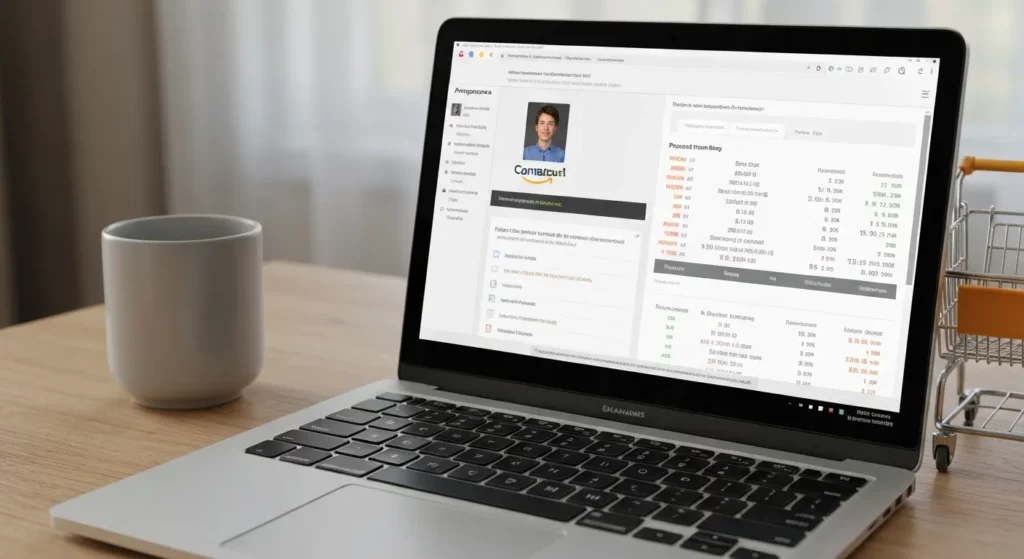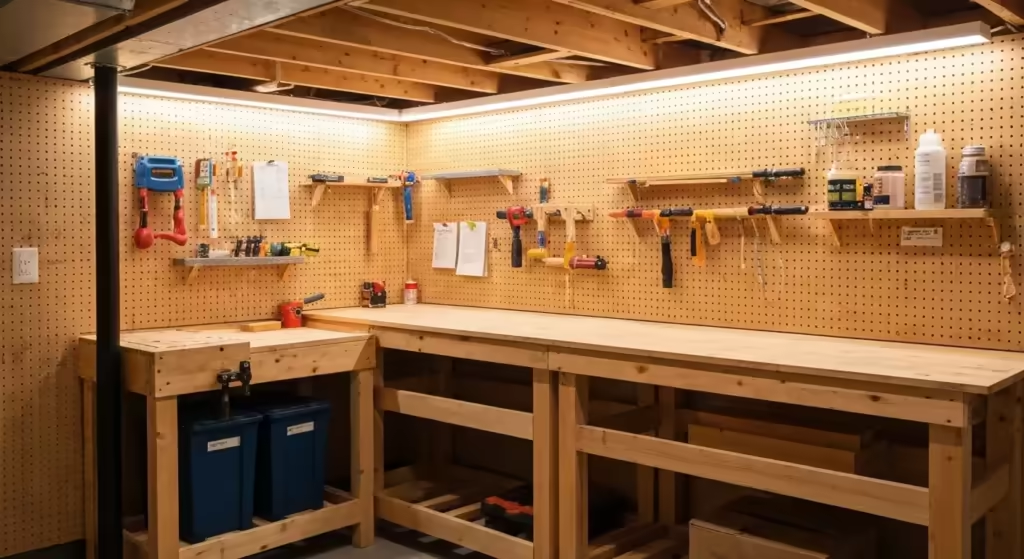I remember the moment with painful clarity. It was a Tuesday morning, the sun was streaming through the kitchen window, and I was enjoying my second cup of coffee. I’d just bought a brand-new, top-of-the-line lawnmower a week before. It was a beauty, and I’d felt a surge of pride wheeling it out of the store. I’d paid a handsome price for it, but I told myself it was an investment.
Then, as I casually browsed the Sunday paper I’d forgotten to read, a flyer fell out. There it was. My lawnmower. The exact same model. But this time, it had a giant, screaming red sticker on it: 30% OFF.
My stomach dropped. I did the math in my head, and the number that came up made my coffee taste bitter. I had, in a single, impulsive purchase, thrown away enough money to cover our grocery bill for two weeks. It wasn’t just about the money, though. It was the feeling. I felt foolish, outsmarted, and frankly, a little angry at myself. At this stage in my life, with a fixed income to manage, I couldn’t afford to be foolish with my money.
That lawnmower incident was my wake-up call. It was the moment I decided I was done being a passive consumer. I was done with buyer’s remorse. I was going to learn how to shop smart. I was going to become a pro at finding the best deals and tracking price drops. This is the story of how I did it.
My Old Life: A Tale of Impulse and Regret
Before my transformation, my approach to shopping was, to put it mildly, unstructured. If I saw something I liked or needed, I’d buy it. The internet made it dangerously easy. A few clicks, and a package would be on its way. I didn’t think much about timing, sales cycles, or price comparisons.
I come from a generation where you saved up for something you wanted, and you bought it when you had the money. The idea of strategically waiting for a price to drop felt… well, a bit foreign. It seemed like a lot of work for a few dollars here and there. Or so I thought.
My wife, Martha, is naturally more frugal. She would often gently suggest we wait for a sale or look for a coupon. I’d usually wave her off, saying, “Oh, it’s fine. We need it now.” The truth is, we rarely ‘needed’ it right that second. I was just impatient. My impatience was costing us, and the lawnmower incident was the final, undeniable proof.
I felt a growing anxiety about our finances in retirement. We were comfortable, but we weren’t wealthy. Every dollar counted. The dream was to travel more, to spoil the grandkids, to have a comfortable cushion for any unexpected health issues. My careless spending was a direct threat to that dream. I knew something had to change, and it had to start with me.
The Awkward First Steps of a Novice Saver
My initial attempts at saving money were clumsy. I decided I would manually track the prices of a few things we needed. We were thinking about getting a new coffee maker, one of those fancy ones that grinds the beans. I had my eye on a particular model.
So, every single morning, I’d open my computer, navigate to three different retail websites, and write down the price in a little notebook I kept by my desk. It was tedious. Some days I’d forget. Other days, the price would fluctuate by a few cents, and I’d wonder if that was significant.
I did this for three weeks. I was getting frustrated, and honestly, a little bored. It felt like a chore, and the savings didn’t seem to be materializing. I was about to give up and just buy the darn coffee maker when my grandson, a tech-savvy teenager, came over for a visit.
He saw my little notebook with its scribbled prices. “What are you doing, Grandpa?” he asked, a curious smile on his face.
I explained my grand plan to track prices. He listened patiently and then said something that changed everything: “You know, there’s an app for that.”
Discovering the Magic of Price Tracking Tools
An app for that. Of course, there was. I felt a bit behind the times, but also intrigued. He showed me on his phone how you could use websites and browser extensions to do the work for me. Automatically. He helped me set up my first price tracking alert.
He explained it in simple terms. “You just find the product you want online, copy the web address, and paste it into this tool. Then you tell it the price you’re willing to pay, and it will send you an email when the price drops to that level.”
It sounded too good to be true. A personal shopping assistant that worked for free, 24/7? I was skeptical, but willing to try. We set up an alert for that coffee maker I’d been tracking so diligently by hand. I set my target price at 20% less than the current asking price.
And then, I waited. I stopped my daily manual checks. I tried to put it out of my mind. About ten days later, an email popped up in my inbox. The subject line read: “Price Drop Alert!”
My heart skipped a beat. I opened the email, and there it was. The coffee maker was on sale, for a price even lower than the one I had set. I clicked the link, added it to my cart, and checked out in under two minutes. The whole process was seamless.
The feeling was incredible. It wasn’t just the money I saved, which was a significant amount. It was a feeling of accomplishment. Of being in control. I had outsmarted the system, legally and ethically. I had harnessed technology to my advantage. That small victory was the spark that ignited my passion for smart shopping.
From Novice to Pro: Building My Savings Strategy
That first successful price track was my turning point. I realized that this wasn’t about being cheap; it was about being strategic. It was a game, and I was starting to learn the rules. I dove in headfirst, determined to master this new skill.
1. The Power of the “Watch List”
I started by creating what I call my “watch list.” It wasn’t just a wish list of things I wanted to buy right away. It was a list of everything we might need or want in the next six to twelve months. A new set of tires for the car. A replacement for our aging dishwasher. A new grill for the backyard. Even birthday and Christmas gifts for the family.
For each item, I would do my research. I’d read reviews, decide on the specific model I wanted, and then add it to my price tracking tool. This took the emotion out of shopping. I wasn’t buying on impulse anymore. I was planning.
2. Learning the Rhythms of Retail
As I tracked more items, I started to notice patterns. Prices weren’t random. They moved in cycles. I became a student of retail seasonality.
- Electronics: I learned that the best time to buy a new TV is often in the weeks leading up to the Super Bowl, or right before new models are released in the spring. Laptops see huge discounts during back-to-school sales in late summer.
- Appliances: Major appliances go on sale during holiday weekends like Memorial Day, Labor Day, and of course, Black Friday. I also discovered that stores are keen to get rid of last year’s models in September and October to make room for new inventory.
- Furniture and Mattresses: I found that prices drop around Presidents’ Day in February and again around Memorial Day. Showrooms clear out old stock to make way for new styles.
- Linens and Bedding: January “white sales” are a real thing! I replaced all our old towels one year and saved a bundle.
This knowledge became my secret weapon. I could now combine my price tracking alerts with my understanding of sales cycles. I wasn’t just waiting for any price drop; I was waiting for the right price drop, at the right time of year.
3. Building My Personal Toolkit
I also realized that one tool wasn’t enough. I developed a small, manageable toolkit of different price tracking methods. I’m not a technology wizard, but I found these were surprisingly easy to use once I got the hang of them.
Browser Extensions: These are little add-ons for your internet browser. When I’m on a shopping site like Amazon or Walmart, a little notification might pop up telling me if this is a good price or if I can find it cheaper elsewhere. Some even automatically apply coupon codes at checkout. It feels like having a savvy friend whispering in your ear.
Dedicated Websites and Apps: These are the workhorses of my system. This is where I keep my main “watch list.” I can track items from dozens of different stores all in one place. I can see the price history of an item, which is incredibly powerful. Seeing a chart of how a product’s price has changed over a year helps me identify what a truly great deal looks like.
Store-Specific Alerts: Many large retailers, like Home Depot or Target, have their own notification systems within their apps or websites. If I know I want to buy a specific tool from a specific store, I’ll set an alert there as well. It’s like having multiple lines in the water.
I never felt overwhelmed because I started slow. I mastered one tool before I added another. My advice is always to find one that feels intuitive and start there.
4. The Pain of a Missed Deal
It wasn’t all smooth sailing. I remember one time I was tracking a high-end digital camera. I wanted to get into photography as a hobby. I had been watching it for months. An alert came through for a flash sale—40% off, but only for 24 hours. It was an incredible price.
I saw the email but hesitated. I thought, “Maybe it will drop even lower around Black Friday.” I decided to wait. By the next morning, the sale was over, and the price was back up. It didn’t drop that low again for over a year. I was kicking myself.
That experience taught me a valuable lesson: when a truly great deal comes along, you need to be ready to act. My research and price history tracking now help me recognize those genuinely rare opportunities. If a price drops to an all-time low, I don’t hesitate anymore. I pounce.
My Crowning Achievement: The Dream Vacation
My biggest price tracking success story, the one that truly made me feel like a pro, was planning our 40th-anniversary trip to Hawaii. It was a trip Martha and I had dreamed about for decades.
A trip like that is expensive, and it has a lot of moving parts: flights, hotels, a rental car. I decided to apply my price tracking principles to the entire vacation.
Flights: I started tracking flights about nine months in advance. I used tools specifically designed for airfare. I learned that the best time to book is usually a few months out, and that flying on a Tuesday or Wednesday is almost always cheaper than a Friday or Sunday. I set alerts for several different date ranges. One morning, an alert came in for a fare that was almost $300 cheaper per ticket than the average. I booked it immediately. Savings: $600.
Hotels: For the hotel, I didn’t book the first thing I saw. I chose a few hotels we liked in the area we wanted to stay. I tracked their prices on multiple travel sites. I also called the hotel directly. I found that sometimes hotels offer special deals that aren’t listed online. By combining a price drop alert with a direct booking that offered a “fifth night free” promotion, I secured a beautiful ocean-view room for a price that felt like a steal. Savings: Over $500.
Rental Car: This was a surprise. I booked a rental car well in advance at what I thought was a decent rate. But I kept the price tracker on it, just in case. A month before our trip, I got an alert that the price for the same car class had dropped by nearly 50% due to a promotion. I simply canceled my original reservation (which had free cancellation) and rebooked at the lower rate. Savings: $250.
In total, on just the major components of our trip, I saved well over a thousand dollars. That was money we could use on the trip itself—for nice dinners, for a helicopter tour, for souvenirs for the grandkids. It made the entire experience more relaxing and enjoyable, knowing that we had been smart about our planning.
Martha was amazed. She went from being a gentle skeptic of my “new hobby” to my biggest cheerleader. That trip wasn’t just a vacation; it was a testament to what a little patience and strategy could achieve.
Life as a Price-Tracking Pro: Peace of Mind and Fuller Pockets
Today, my approach to shopping is completely different. The anxiety I used to feel about spending money is gone. It’s been replaced by a sense of confidence and control. I no longer wander aimlessly through stores or browse online without a plan. I’m a purposeful shopper.
The savings have been substantial. I estimate we save a few thousand dollars every year, just by being patient and strategic. That’s money that has gone into our retirement accounts, into a home improvement fund, and into creating memories with our family. We haven’t deprived ourselves of anything; in fact, we can afford more because we pay less for everything we buy.
One of the most rewarding aspects of this journey has been sharing my knowledge. I helped my daughter and son-in-law save nearly $800 on a new set of appliances for their first home. I showed my neighbor how to track the price of a specific set of golf clubs he’d been eyeing. He got them for 25% off two months later and was absolutely thrilled.
It’s not about being a technology genius. It’s about a change in mindset. It’s about shifting from being a reactive consumer to a proactive one.
My Hard-Won Lessons for You
My journey from an impulsive shopper to a price-tracking pro has taught me so much. It’s been about more than just money. It’s been a journey of learning, patience, and empowerment. If you’re feeling that same anxiety I felt, that same frustration of overpaying, I want you to know that you can make a change. Here are the most important lessons I’ve learned:
1. Patience Is Your Greatest Financial Asset
This is the single most important lesson. In our world of instant gratification, learning to wait is a superpower. Almost everything you want to buy will eventually go on sale. By simply building a “watch list” and waiting for the right moment, you put yourself in the driver’s seat. Delaying a purchase isn’t a sacrifice; it’s a strategy.
2. Knowledge Erases Fear and Doubt
Before, I shopped based on emotion. Now, I shop based on data. Using a price tracking tool to see the price history of an item is incredibly empowering. It shows you what a good price truly is. You’re no longer guessing. This knowledge gives you the confidence to act decisively when a great deal appears.
3. Start Small to Build Big Confidence
Don’t try to track twenty items on five different platforms on your first day. You’ll get overwhelmed and quit. Pick one thing you need or want in the near future. Find one user-friendly tool. Set up one alert. When you get that first successful “price drop” email and make that first smart purchase, the feeling of accomplishment will fuel you to do more.
4. This Isn’t About Being Cheap; It’s About Being Smart
I want to be very clear about this. Price tracking has allowed me to buy higher quality items than I would have otherwise. I can afford the better brand because I’m not paying full price. It’s about maximizing the value of every dollar you’ve worked so hard for. It’s about affording a better lifestyle, not a cheaper one.
5. Embrace the Joy of the Hunt
I’ve come to genuinely enjoy the process. It feels like a game or a puzzle. The thrill of finding that amazing deal, of knowing you paid the best price, is a unique and satisfying kind of joy. It’s a feeling of victory that goes far beyond the simple act of acquiring an item.
My journey started with the sting of regret over a lawnmower. But it led me to a place of financial confidence and peace of mind I never expected. It doesn’t matter your age or how comfortable you are with technology. The tools are out there, and they are easier to use than you think. All it takes is a little patience and the decision to take control. You’ve earned your money; now it’s time to make it work as hard for you as you did for it.














